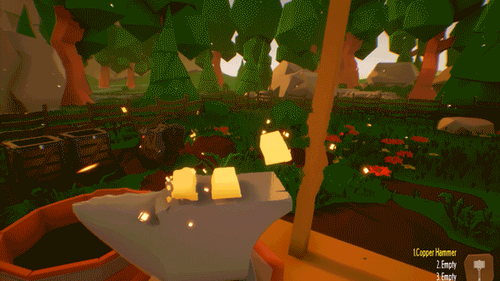

The second notary to record a sale of this property was Jean Garic, who scribbled a hard-to-read document in 1773. It is, however, a very ancient structure for our careful search through musty notarial acts takes us back to the fifteenth day of December, 1772, when Don Andres Almonester y Roxas, then a lowly escribano público, set down the terms of a realty transfer. "".This so-called "Lafitte Smithy", if you are interested in facts, was probably never put to such a use, in spite of the words on the iron plaque now decorating its Bourbon Street wall.
My little blacksmith shop horse plus#
Plus - it was a bar AND a blacksmith shop at the same time?ĭo you have a source for the barroom permit in 1933? The HNOC has a quote from a guidebook in 1937 describing the location as a plumbers shop, and the only source I find for the 1933 permit is Atlas Obscura, which lists you as the source. An interesting claim considering Pierre Laffite (the Laffite boys spelled their name Laffite) didn’t even come to Louisiana until 1803 (he was a refugee from San Domingue) and Jean followed after him later. I did, however, decide against pressing the issue.) In fact, their own website claims that the Lafitte Brothers used the building between 17. (Luckily I was in good with the bartenders and they didn’t enforce it, since he wasn’t there at night anyway. He got so defensive that he banned me from the bar. I spoke to the manager and told him about the Sanborn maps and questioned how they could claim to be the oldest bar in the country since 1772 when they also claim to have been a blacksmith shop in the Lafitte era and that I have records that show it was a cobbler shop in 1897.

So in 2006 when Lafitte's Blacksmith Shop's bar-back, Darryl, began wearing a t-shirt with the claim to the oldest bar in the United States, I questioned it and he got a little defensive and simply said that the claim was true. (Attached is a photo taken circa 1895 which shows the outbuilding at the side - notice both the outbuilding and the main building each feature vitrines - it's a shame that the sign on the main building is unreadable.) In rooting around in other records I found that the property had a dependancy to the side where the courtyard is which was demolished around 1910 and that the oyster shop was in the outbuilding while the building which still stands on the corner served as the cobbler shop. Mongo and served as a combination oyster shop and cobbler. According to that directory, the building that is now Lafitte’s Blacksmith was owned by a C.

I processed the Sanborn survey of 1897 for the City Archives in fact, they said I could keep the photocopies of the Sanborn file they sent me and they are still in my library and I still refer to them frequently. ( Click here for more information on Sanborn Maps.) Their documentation is very thorough and extremely complete - detailing the buildings, their addresses (and in New Orleans they include the buildings' old and new addresses, which is valuable when one is researching a building prior to the address renumbering in 1895), their construction, who owned them and (most importantly) how they were used. There was a cartography firm called Sanborn that made maps and surveys in cities around the country for use in fire insurance.


 0 kommentar(er)
0 kommentar(er)
